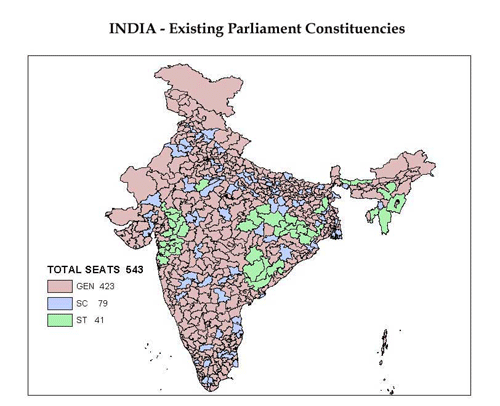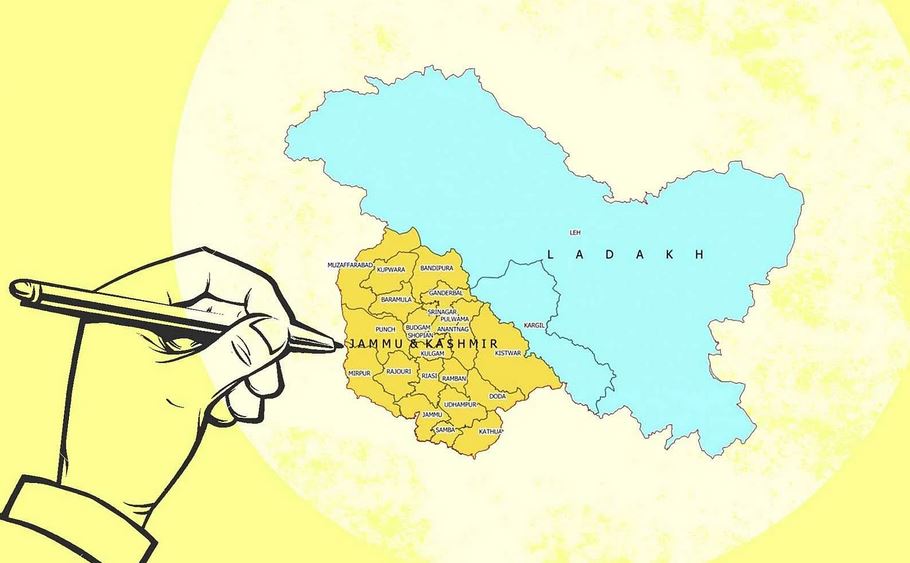
Delimitation: Shaping Electoral Constituencies
Delimitation is the vital process of setting clear boundaries for territorial constituencies within a country, primarily in response to shifts in population. This practice plays a pivotal role in redefining the political landscape. Through delimitation, changes can emerge in the allocation of seats at the national and state levels, affecting the composition of the Lok Sabha and Legislative Assemblies.
Key facets of the delimitation process include:
- Population Dynamics: Delimitation hinges on analysing population shifts and trends from recent census data.
- Delimitation Commission: The body responsible for the delimitation process is aptly named the Delimitation Commission.
Why Do We Delimit Constituencies?
Delimitation serves several crucial purposes:
- Population Parity: By conducting delimitation, the aim is to ensure that each constituency represents an equitable portion of the population. This fosters fairness in political representation.
- Geographical Equity: The process strives to create a balanced division of geographical regions, preventing any political party from gaining an unfair advantage due to boundary manipulation.
- One Vote, One Value: Delimitation aligns with the fundamental principle of “One Vote, One Value,” ensuring that each vote carries an equal weight in the electoral process.
Delimitation is essential for reconfiguring electoral constituencies based on population changes. This process aims to maintain equity, fairness, and equal representation, integral to a just and democratic electoral system.
Article 82 of the constitution mandates the Parliament to pass a Delimitation Act following each Census.
Article 170 requires that States are also subjected to the division into territorial constituencies under the Delimitation Act after every Census.
Article 82
AFTER EVERY CENSUS: PARLIAMENTARY READJUSTMENT
Following each census, a crucial process of readjustment unfolds. This readjustment involves two fundamental aspects:
- Lok Sabha Seat Allocation: The allocation of seats in the Lok Sabha to individual states.
- Territorial Constituency Division: Each state’s division into territorial constituencies.
The authority to make these adjustments lies within the powers of the Parliament. It falls under their purview to decide the manner and the authority responsible for this task.
To execute this, Parliament has passed several Delimitation Commission Acts. These acts serve as a framework and guide for the comprehensive process of reshaping the parliamentary constituencies.
The sequence of these acts includes the years 1952, 1962, 1972, and 2002. They dictate the rules and procedures for the readjustment, ensuring a fair and representative allocation of parliamentary seats based on the latest census data.
Notably, an exciting juncture in this process was the 42nd Amendment Act of 1976. It imposed a freeze on allocating Lok Sabha seats to states and dividing state territories into constituencies. This freeze, initially set at the 1971 census level, was extended for an additional 25 years, reaching up to the year 2026. This extension came through the 84th Amendment Act of 2001. The main aim behind this freeze was to encourage measures to limit population growth.
In summary, after each census, the Parliament takes on the responsibility of ensuring that the allocation of parliamentary seats and the delineation of constituencies are adjusted to reflect the nation’s evolving demographics. The Delimitation Commission Acts carefully guides the process, ensuring fairness and accuracy in parliamentary representation.
Delimitation in Jammu and Kashmir: Shaping Electoral Representation

The recent invitation extended by the Union government to political leaders from Jammu and Kashmir for a meeting with the Prime Minister in Delhi has sparked interest and speculation regarding the upcoming delimitation process in the region. Delimitation, a crucial electoral process, involves redrawing boundaries for Assembly or Lok Sabha seats to reflect changes in population over time.
Here’s a comprehensive overview of the delimitation process in Jammu and Kashmir:
1. Delimitation Commission:
- A Delimitation Commission executes delimitation. The decisions made by this commission carry the force of law and are not subject to legal challenges.
- The primary goal is to redraw constituency boundaries based on the latest Census data to ensure an equitable distribution of the population across all seats in the State.
2. Impact on Seat Numbers:
- Delimitation can result in changing a constituency’s geographical boundaries and altering the total number of seats within a state.
3. Unique Context:
- Delimitation exercises in Jammu and Kashmir have differed from those in the rest of India due to the region’s special status revoked by the Centre in 2019.
- Before abrogating its special status, the delimitation of Lok Sabha seats in J&K adhered to the Indian Constitution. In contrast, the delimitation of the State’s Assembly seats followed the Jammu and Kashmir Constitution and the Jammu and Kashmir Representation of the People Act 1957.
- The State’s Assembly seats underwent delimitation in 1963, 1973, and 1995.
4. Recent Developments:
- In March 2020, a Delimitation Commission was established, led by retired Supreme Court judge Ranjana Prakash Desai. The commission was tasked with completing the delimitation process in J&K within a year.
- Alongside Justice Desai, the Election Commissioner and the J&K State Election Commissioner serve as ex-officio commission members. Additionally, there are five associate members.
5. Impact of Abrogation:
- Following the revocation of Jammu and Kashmir’s special status in 2019, the delimitation of Lok Sabha and Assembly seats in the newly-formed Union Territory aligns with the provisions of the Indian Constitution.
- As per the Jammu and Kashmir Reorganisation Bill, the number of Assembly seats in J&K will increase from 107 to 114, with an anticipated benefit to the Jammu region.
The upcoming delimitation process in Jammu and Kashmir represents a significant step towards ensuring that electoral boundaries accurately reflect the region’s evolving demographics, ultimately promoting more equitable political representation.
